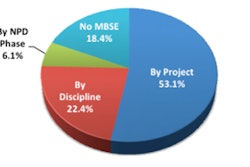
Getting a product to the right market at the right time in the right quantity—no big deal, right? While you’re at it, how about doing that across thousands of stock-keeping units (SKUs), parts, suppliers and manufacturing partners in eight different time zones? While commerce and manufacturing become increasingly global, digital and interconnected, there is a growing awareness that every major enterprise is built on a complex, global supply chain. So bearing all this in mind, as for those goals above, it’s really not that easy.
As we consider these increasing demands on the supply chain, it’s always helpful to examine them in the greater context of where the industry was and where we’re headed next. At E2open, we’re constantly thinking about business trends that may affect how global supply chains are managed. With the growing importance of connecting disparate supply chains, and the move toward collaboration and mutual success criteria, the approaches used in the past don’t support how tomorrow’s supply chains may operate. These days, it truly takes an integrated approach of planning, process and a business network to separate the good from the great.
With that in mind, here are some thoughts regarding the global supply chain trends you may want to keep an eye on in 2015. Not surprisingly, new product introduction (NPI) has a profound impact on supply chain management (SCM) and finds itself at the top of my list.
- NPI Drives the Convergence of Design and Manufacturing
Product lifecycles, as well as NPI, are on a more accelerated track than ever before as businesses seek new ways to stay competitive. But keeping up with this fast pace of rolling out new products is proving to be quite the challenge for today’s businesses. We all heard the grim statistic: It’s estimated that up to 95 percent of the new products introduced each year don’t make it. The real numbers and nuances behind this failure rate should be examined carefully from the supply chain perspective to see what we can learn. Many products tend to disappear because they fail in one or more ways—quality, market timing, consumer preferences and/or competition. Considering the lessons learned from the past, could 2015 be the year that true innovators apply rigor to the supply chain and shift more NPIs to the win column?
Building more advanced and agile supply chains is essential to increasing the success rate of NPI. All of the key factors for success—low initial costs, time to market, product quality, and data-driven understanding of customer preferences and marketing intelligence—can be achieved in a truly collaborative and networked supply chain. To further maximize the chances for success, integration is the name of the game. Manufacturing design should be integrated with product design to allow for fast iterations of both, and outsourced suppliers should be closely intertwined with the NPI process. This is as true for the consumer goods industry as it is for high tech, even though they have widely varying NPI processes and requirements.
As products increase in complexity and product life spans decrease, planning and ramping up to production for NPI must become a core competency as NPI costs and time to ramp become more important factors for meeting revenue and margin targets. But a successful ramp from NPI is only part of the story. There’s also the concept of new technology introduction (NTI), the launch of a whole new technology that could be the foundation of a new product. Businesses face similar pressures to manage NTI effectively to ensure long-term success. Only by continuously investing in a robust, smart supply chain can businesses build the capacity for generation after generation of successful new products that can compete in a crowded and rapidly shifting marketplace. As I see it, the difference between winning and losing in today’s hyper-competitive environment is NPI (and NTI), especially in the high-tech industry, where supply chains move the fastest and the stakes are particularly high. This is going to be clearly evident in 2015.
- Internet of Things (IoT) Moves into the Supply Chain
Imagine being able to sense the here and now for demand and supply data, available anywhere. This is going to happen soon enough: The IoT is coming and the data that comes along with it is going to be vast. It may sound like something out of the Jetsons, but soon we may have smart products that were packaged in smart boxes delivered to smart warehouses that know where demand is occurring. And you may be able to look at a pallet and be able to immediately pull the data for its contents. Retailers, such as Wal-Mart, already embraced the promise of this next-generation technology by leveraging radio frequency identification (RFID) to track its products, which converts the data into an EDI signal the moment it ships a product or it arrives on a dock.
The future explosion in the number of intelligent devices is going to create a network rich with information that allows supply chains to assemble and communicate in new ways. Gartner forecasts that a 30-fold increase in Internet-connected physical devices by 2020 may significantly alter supply chain leader information access and cyber-risk exposure. Consider this scenario—with the vast array of logistics data becoming available, the enhanced visibility reduces inventory, transforming container ships into floating warehouses, and enhancing a retailer’s ability to more accurately and profitably respond to consumer demand. With this sharp increase in the volume of devices (and the information that comes along with them), now we are going to see big data take center stage in the supply chain.
But it doesn’t stop there. The supply chain may also have to consider the right data to derive meaning from big data and fast data to take action in a meaningful window, which brings me to my next prediction.
- Big Data Is Small on Information Delivery
Yes, the tsunami is coming—from the IoT and more nodes going more granular. Big data is everywhere and is going to only increase as the IoT gains a firmer foothold in the supply chain. We already deal with our fair share of it in today’s complex manufacturing environments. But what’s equally daunting is fast data—that is, the incessantly changing positions of forecasts, orders, shipments and inventory. This challenge is complicated enough within the virtual enterprise and becomes downright overwhelming in the context of global trading networks—with multiple tiers of partners trying to manage information changes across unique operating systems.
To further complicate matters, companies and their networks are still maturing on the critical understanding of the nervous systems of their supply chains. As companies gain this deeper level of insight, they may also have to dig deep in terms of interpreting the vast supply chain data that becomes available. The volume of data isn’t meaningful—in fact, it is dangerous—if a company doesn’t have a strategy for structuring what information is important and how it connects all of the data sources, as well as synchronizes and cleanses the data. It’s just as important to consider what metrics are important—and what compound metrics mean the most up, down and sideways in the organization.
- In-Flight Information
The value of seeing a supply disruption or opportunity as it’s happening is a strategic advantage in those crucial few minutes. In the supply chain, knowing what is happening in your network allows for better real-time decisions and execution. One trend supporting this ability is concurrent computations, which are calculations performed on new data as it arrives into a business network. The network communicates data in real time from all of the connected trading partners, which is then used to calculate current and projected values of critical metrics, and trigger alerts when those thresholds are exceeded. This calculation provides a business with predictive visibility in near real time. The business network integrates the data, but it is process harmonization and concurrent computations that put the data into alignment, and give users the insight they need as to the health of their operations.
With predictive visibility, businesses can see the potential impact that an event is going to have in the future right now. It’s similar to driving down the freeway: constantly taking in information, calculating the current and projected implications of that information, and taking action in response.
Looking at the next layer, combine big, fast data from throughout the network, contextualize it through process harmonization, and determine its significance and potential impact with network concurrency. Now you have the virtual equivalent of asking a colleague what the latest status of some critical shipment is and understanding what it means. In 2015—and beyond—expect to see more companies looking to better leverage this early warning system as they recognize that the ability to rapidly respond to problems and opportunities at the moments when it matters most is a key source of competitive advantage.
- Postpone to Perform
Speaking of opportunities, the abundance of real-time information is inspiring increasing interest in postponement for manufacturing. Postponement entails collecting true demand signals and fulfilling orders once a business has a clearer picture of the market.
Consider this example from the apparel space: At the beginning of the U.S. football season, there’s no way of knowing the demand for a particular player’s jersey, as the performance of that particular team and that specific player are a big question mark. But by having blank jerseys ready, the partially finished products can be completed to match market demand mid-season following that team’s once-in-a-lifetime play. By enabling this configuration later in the process, closer to the customer’s requirements, supply chains are poised to take agility to a whole new level.
- The Supply Chain Goes Digital
When you look at supply chains today vs. a decade ago, it’s an entirely different ballgame. Today, as the supply chain entered the Digital Age, it’s all about better, faster and more. Though businesses are armed with the latest tools to ideally keep up with a high volume of information whizzing back and forth, the fact of the matter is that supply chains are not keeping up with reality. The reason is simple conceptually, albeit a difficult problem to solve: Physical supply chains are moving faster than what digital supply chains can track. As a result, there’s a fundamental gap in the information that digital supply chain systems are relaying back, meaning that they’re delivering a false perception of what’s actually happening and setting businesses up to make decisions with outdated information. From there, the vicious cycle begins of continually making a set of decisions based off of bad information.
So how can a company avoid going down the wrong path? It all comes down to the democratization of the supply chain. Part of the underlying issue as to why information is so out of sync is because the different tiers of the supply chain aren’t on the same footing with respect to their resources. The opportunity is there to bring all companies—both large and small at all corners of the globe—on to a level playing field with a single technology solution that provides a scalable, shared view of what’s happening where in the supply chain and a forum for all parties to collaborate in real time.
Happy New Year
Major advances in SCM can’t come soon enough; global enterprises are faced with a daunting array of obstacles, as well as an endless stream of opportunities. Big, fast data offers the promise of more accurate planning and prediction, but gathering, storing and analyzing all of that data creates complex challenges, as does keeping up with the rapid digitization of information in the supply network. The potential of the IoT and the competitive edge that can be gained from effective NPI are similarly electrifying and intimidating. Real-world limits on raw materials, energy resources, transportation capacity and skilled workers mean we must continue to strive relentlessly for greater efficiency in all aspects of the supply chain.
While kicking off the New Year, keeping an eye on the above trends may help us get a grip on successful SCM. Staying on top of developments and being ready to act fast when the time is right is going to help organizations of all sizes prepare for a successful 2015 and beyond.













